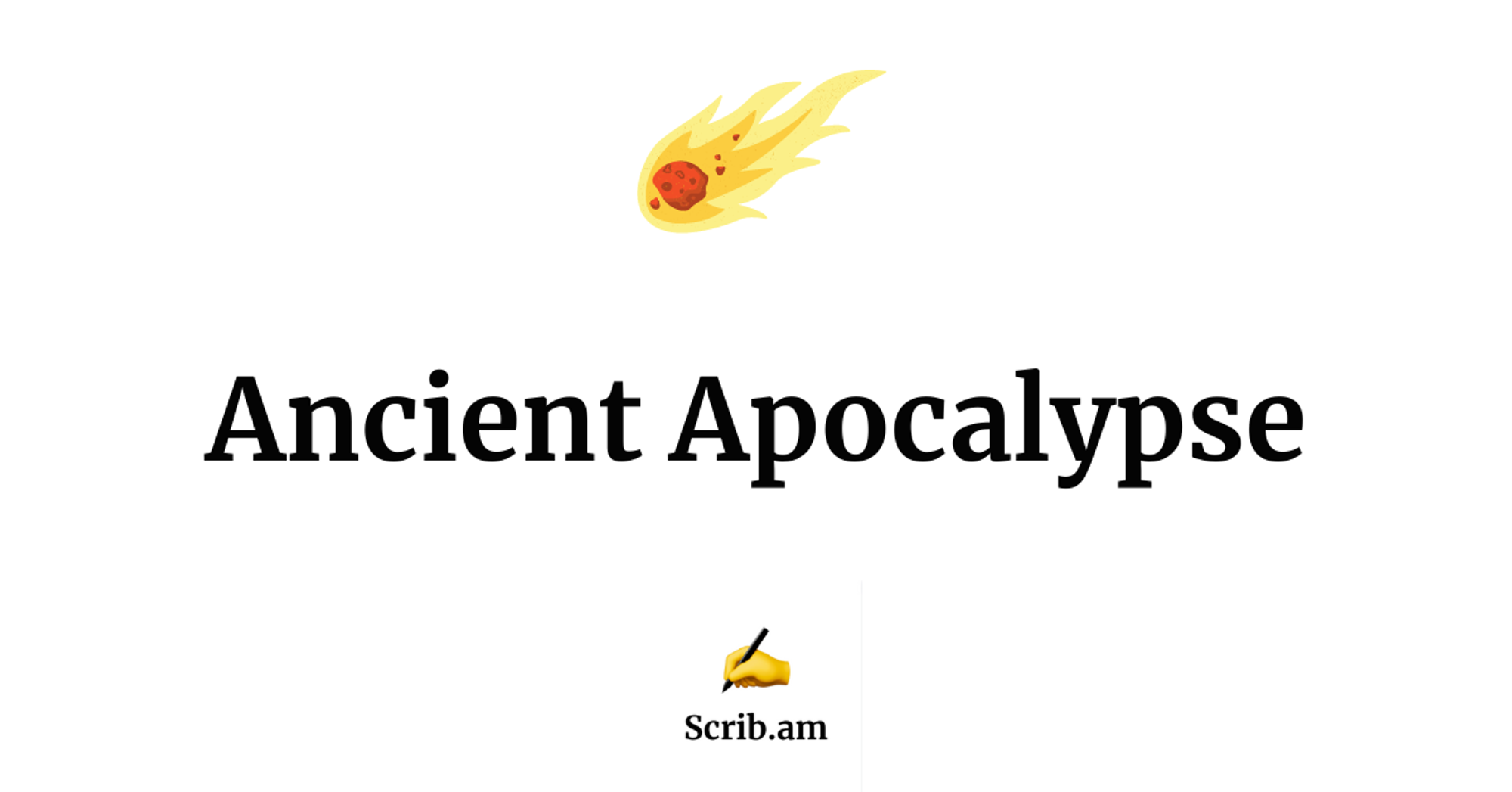The most popular docuseries on Netflix at time of writing this piece (November 2022), is Ancient Apocalypse, presented by Graham Hancock.
It has climbed to the top of the viewing charts while attracting a tsunami of criticisms from the (mainstream) media.
Here are a few stories surfaced by Google on November 26, 2022.
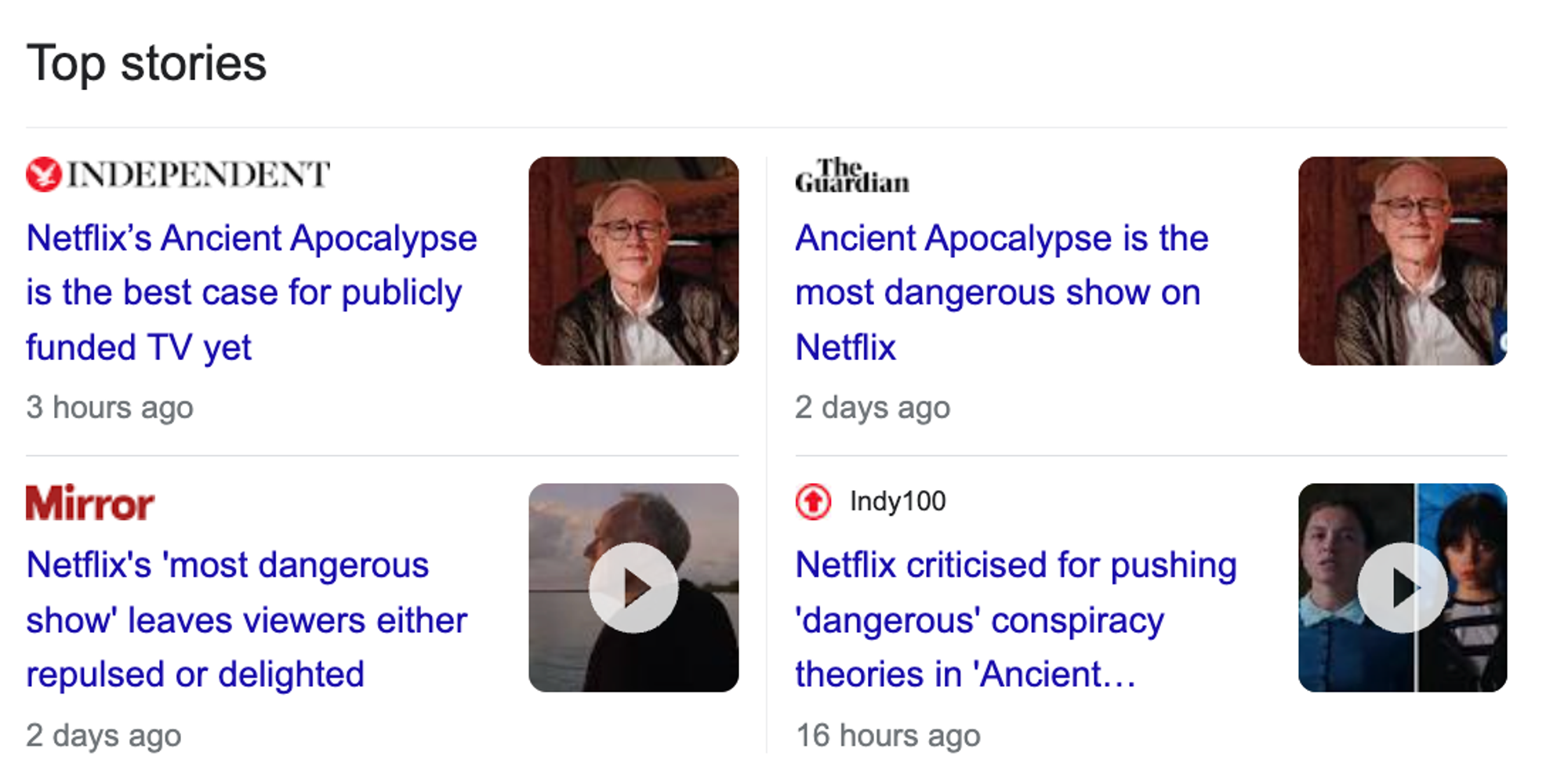
Read for instance what The Conversation concludes about the series:
Netflix labels Ancient Apocalypse a docuseries. IMDB calls it a documentary. It’s neither. It’s an eight-part conspiracy theory that weaponises dramatic rhetoric against scholars.
Tsunami is indeed the appropriate description for a show which mainly discusses the apocalyptic floods which put an end to the last Ice Age, c. 12,800 years ago, and would have destroyed an ancient advanced civilization.
Pseudo-science?
Here’s how Graham Hancock is presented on Wikipedia:
Graham Bruce Hancock (born 2 August 1950) is a British writer who promotes pseudoscientific theories involving ancient civilizations and lost lands. Hancock speculates that an advanced ice age civilization was destroyed in a cataclysm, but that its survivors passed on their knowledge to hunter-gatherers, giving rise to the earliest known civilizations of ancient Egypt, Mesopotamia, and Mesoamerica.
To be fair, it pretty much sums up the content of the show you can watch on Netflix.
But is Graham Hancock a pseudoscientist?
Actually, he does not even claim to be a scientist.
He introduces himself as a journalist focused on historical investigation.
If you consider that someone who has invested decades on a specific topic has developed some sort of knowledge around that particular area, you can at least pay attention to his arguments.
It does not mean that what he’s saying is true but you can’t dismiss all the efforts simply because they don’t fit what we’ve been taught about our past, especially when the criticism is totally unrelated to the matter at hand.
The issue is that Graham Hancock uses words and dramatisation editing techniques also leveraged by conspiracy theorists spreading tales of alien lizards ruling the world or secret governments engineering viruses and vaccines to control the world population.
The M-word
One example: I abhor the “mainstream” adjective (widely used by extremists to promote their agenda) and Hancock throws it into most of his descriptions of the academic community.
I would prefer another formulation, such as “contrary to the position of leading academic authorities,…”, “contrary to the studies of the scientific community,…” or simply “contrary to the scientific consensus,…”
There’s nothing wrong in being contrarian if you’re bringing grounded arguments to the debate but Hancock’s case would definitely be stronger if he adopted another vocabulary than the litany of frustrations voiced by conspiracy theorists, anti-vaxxers, white supremacists and the likes.
I do think that Hancock’s way of speaking has been radicalized both by decades of violent antagonism with the scientific community and a deliberate narrative, which has proven quite successful from a commercial perspective: most of his books have reached the top of bestseller lists.
Look up
Wording aside, what do we learn in Ancient Apocalypse, if anything?
Most of the data-driven arguments brought by Hancock are based on archaeoastronomy, a discipline which addresses how people in the past studied the sky and applied their learnings in their cultures.
Our ancestors didn’t have Love Island, the Las Vegas Strip or Netflix to cure their boredom. They spent long hours gazing at the night sky, meditating on their place in the universe, which evolved from a central stage to a remote corner as scientists improved their understanding of our actual position in the cosmos.
We can therefore affirm that astronomy has always played a critical role in ancient civilizations. Nothing new here. But the interesting part is that the gigantic constructions they erected thousands of years ago seem to have been - at some point at least - perfectly aligned with specific stars, such as Sirius or recurring natural phenomena, such as the setting sun at the Summer Solstice.
Although we don’t have written descriptions from the architects of the oldest constructions where they would have detailed their motivations, we can assume that those orientation choices were driven by a mix of spiritual and practical considerations: a reverence for the awe-inspiring celestial bodies and a smart way to measure the passage of time.
As proposed in the docuseries, comparing the past position of celestial bodies in the sky (in relation to terrestrial elements) with the orientation of ancient constructions might indeed be an interesting way to approximate the date when they were erected, if we believe that they were built with a specific astronomical purpose.
Because of precession, different stars will serve as north stars and the constellations arrayed along the ecliptic (zodiac) will gradually change positions. Their move about one degree every 73 years. (Source: maine.edu)
Older than we think…
The main controversy addressed in Ancient Apocalypse revolves around the dating of (pre) historical structures.
Current textbooks teach you that the oldest known civilization dates back to c. 6,000 / 5,500 years ago in Mesopotamia (present-day Iraq). This is when history officially began, with the earliest forms of recorded writing.
Anything before that is deemed prehistoric. We would have evolved from nomadic hunters-gatherers to settled farmers roughly 12,000 years ago. Agriculture was a key driver of our technological evolution but the tools we used in the earliest days were pretty basic.
Just look at this sample dating back to 500 BC (2500 years ago).
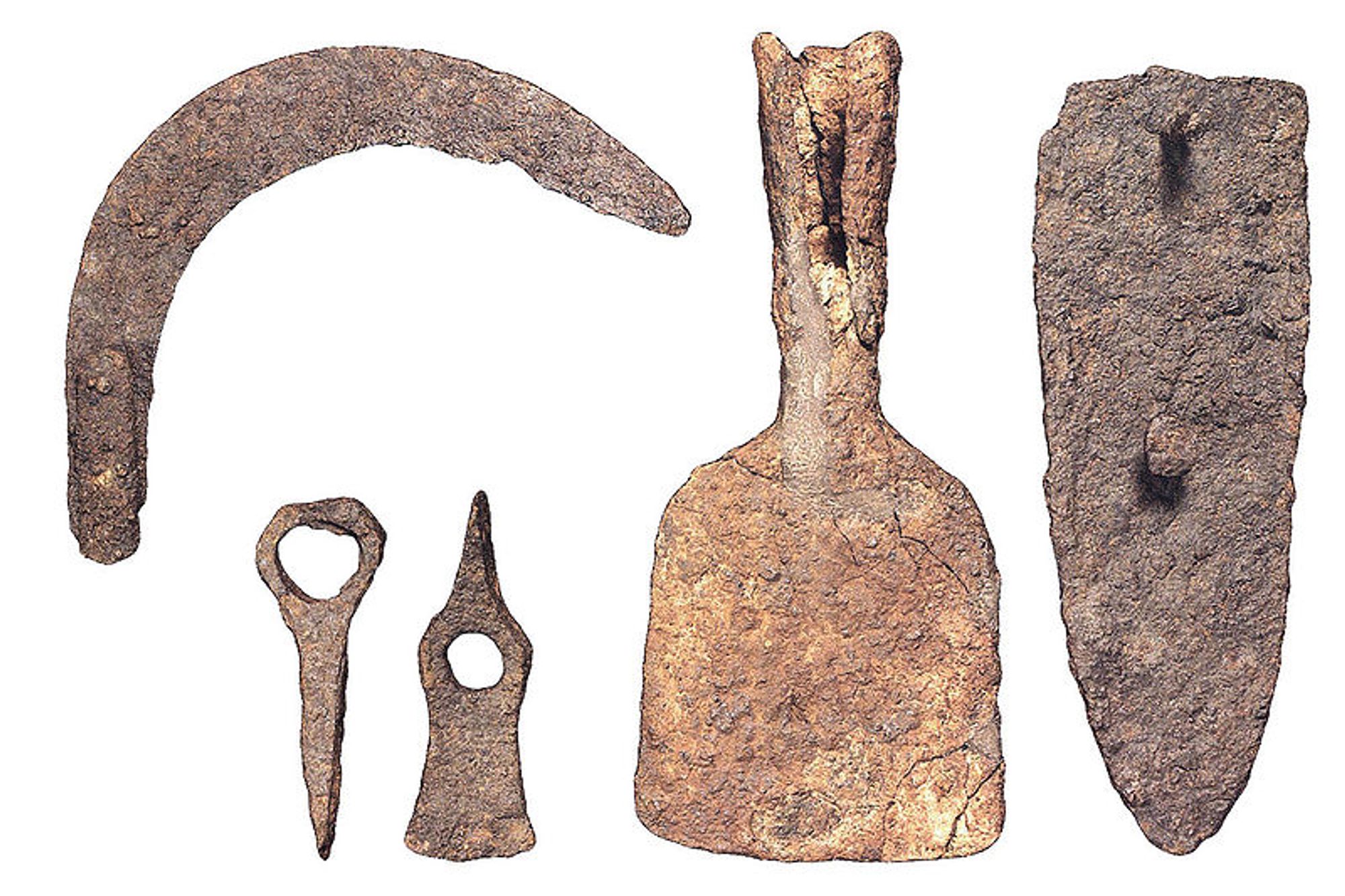
Göbekli Tepe
If our capabilities and tools were so limited, how do we then explain the level of craftsmanship required to erect something like the recently excavated Göbekli Tepe complex in present-day Turkey, which was dated by the scientific community to the Pre-Pottery Neolithic, between c. 9500 and 8000 BC (11,500 to 10,000 years ago).
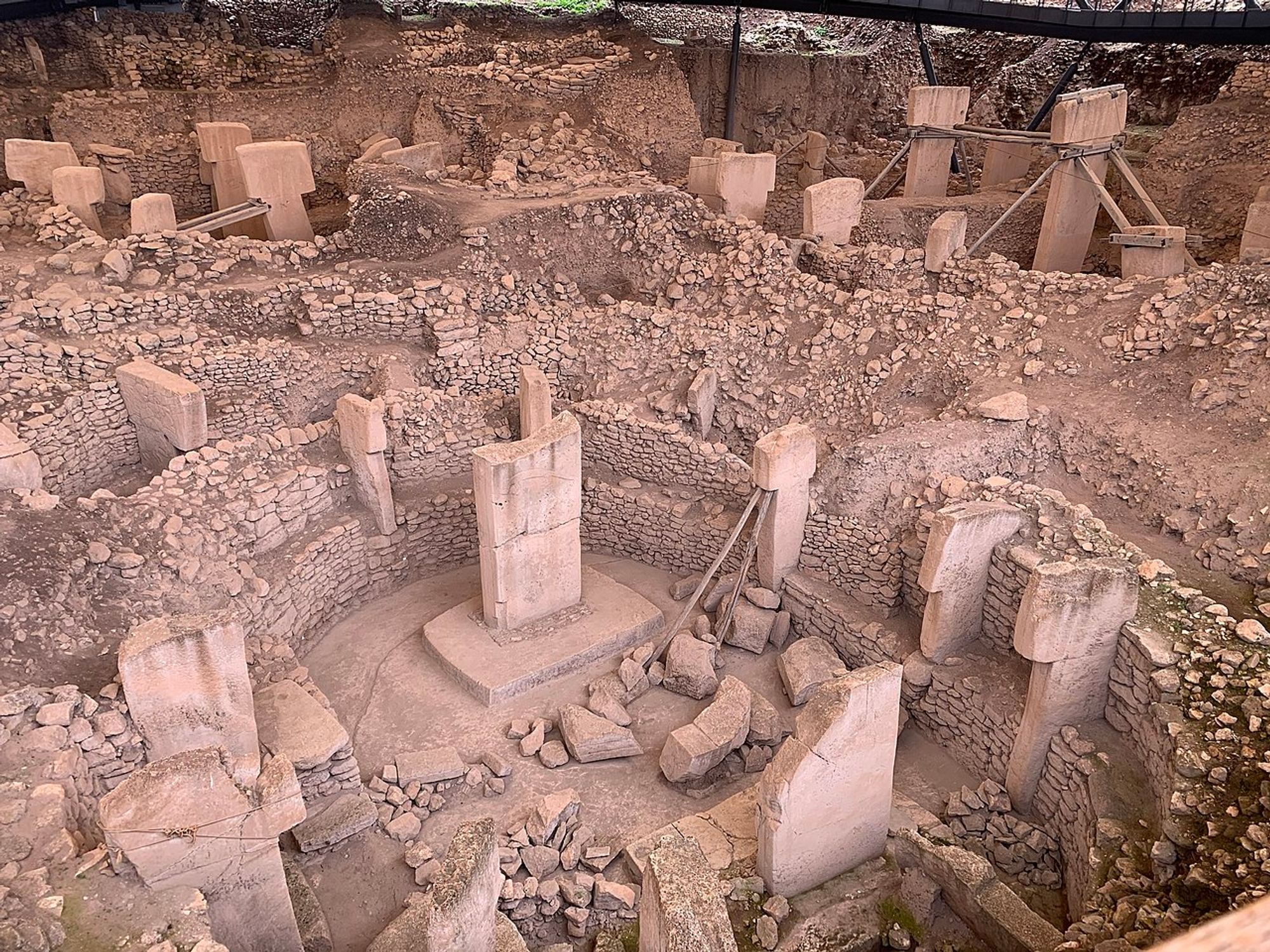
Remember that the set of farming tools pictured above dates back to 2,500 years ago.
So there’s almost a 10,000-year gap between the perfectly crafted pillars excavated at Göbekli Tepe and those antique rudimentary tools. Let’s admit that Göbekli Tepe’s builders were obviously far more advanced than early farmers equipped with primitive tools.

Hancock’s argument is that Göbekli Tepe and other monumental buildings across the globe leveraged the knowledge (and the tools ?) of an ancient lost civilization, far more advanced than the early Neolithic farmers, who would have been trained by the last survivors of an apocalyptic event.
Why not? If we all agree on the fact that dinosaurs were wiped out by an asteroid 66 million years ago (a disputed theory), a human civilization could have been destroyed by some natural cataclysm 12,800 years ago.
Here are a few other sites explored in Ancient Apocalypse.
Indonesia: Gunung Padang
The underlying constructions could be as old as 20,000 years.
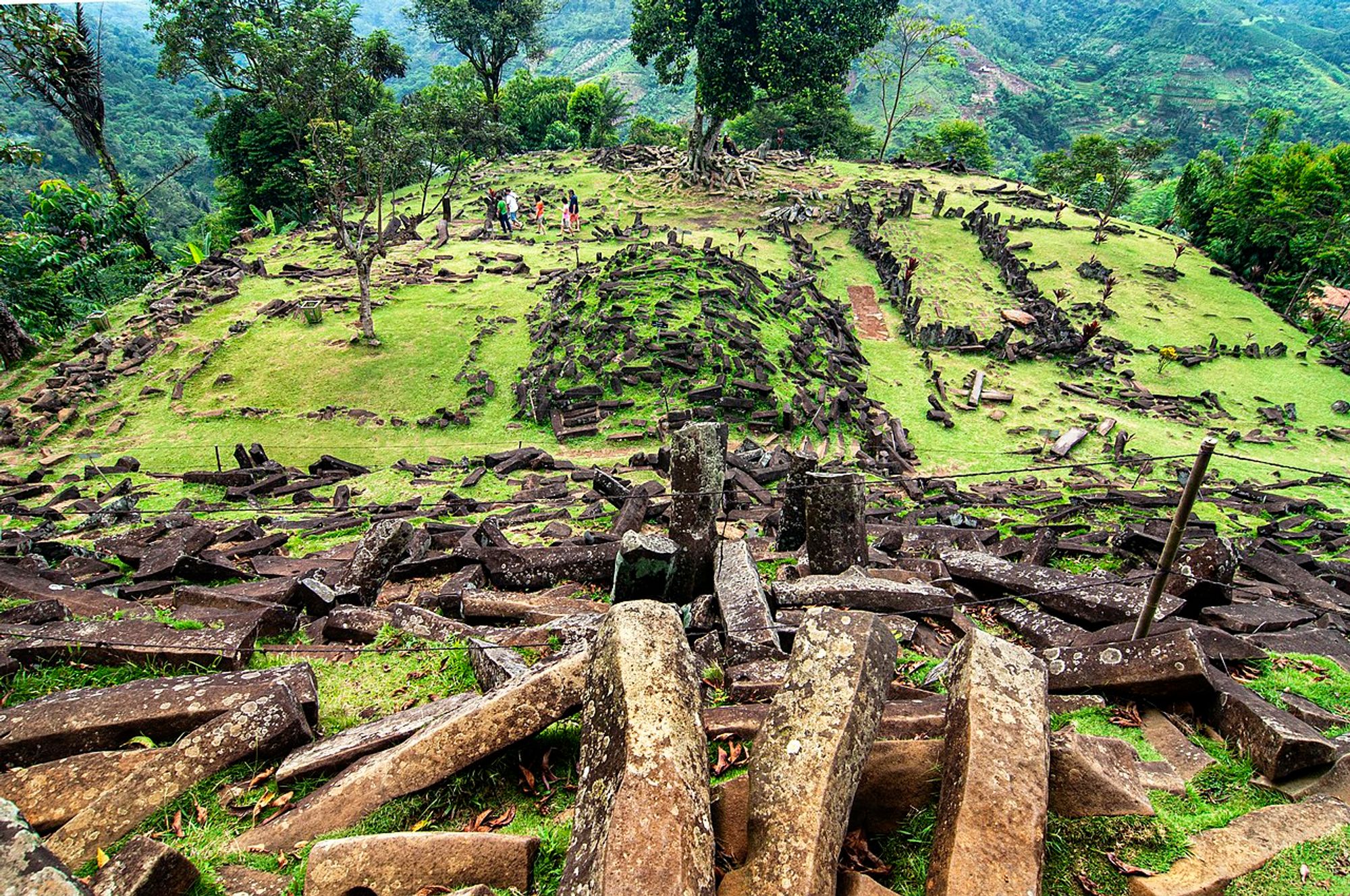
Malta: Ġgantija
A megalithic temple complex from the Neolithic era (c. 3600–2500 BC). Much older according to the theory developed by Hancock.
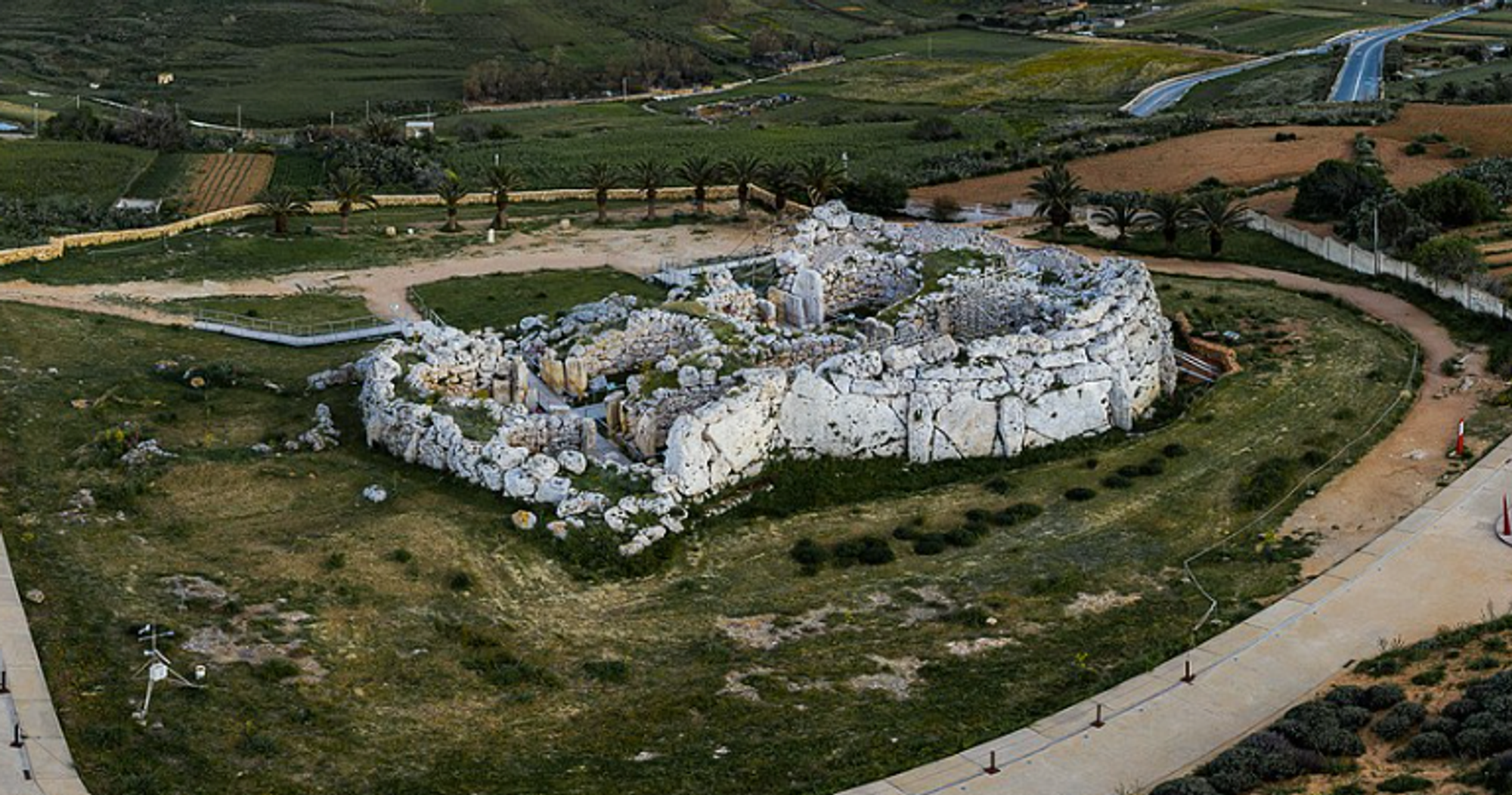
We can definitely see some similarities between the construction patterns at Göbekli Tepe and at Ġgantija, even if the two constructions would be 5,000+ years apart. The comparison is quite intriguing.
Bahamas: Bimini Road
It is generally considered to be a naturally occurring geological feature. Hancock posits that it’s actually a man-made structure. The sonar survey carried out in the docuseries tends to support the man-made argument. And, quite logically, if this is a man-made artefact, the construction would date back to a period when this part of the Bahamas was above water, during the last Ice Age (12,800+ years ago).
USA, Ohio: Serpent Mound
It is considered to have been built by the Adena peoples around 320 BCE. Graham Hancock argues that the design would be much older, potentially dating back to the end of the last Ice Age, at a time when the opening of the serpent’s jaws was perfectly aligned with the sun setting on the nearby hills at Summer Solstice evening (these days the alignment is slightly off). To be fair, it wasn’t the most compelling demonstration in the series.
Pure Myths or Faded Memories?
One of the most interesting contrarian arguments developed by Hancock is that myths could be not mere inventions but faded memories we should take into consideration when investigating the origins of our civilization.
Most cultures do for instance share some form of apocalyptic flood tales. In the western world, we’ve all heard or read the story of Noah’s Ark.
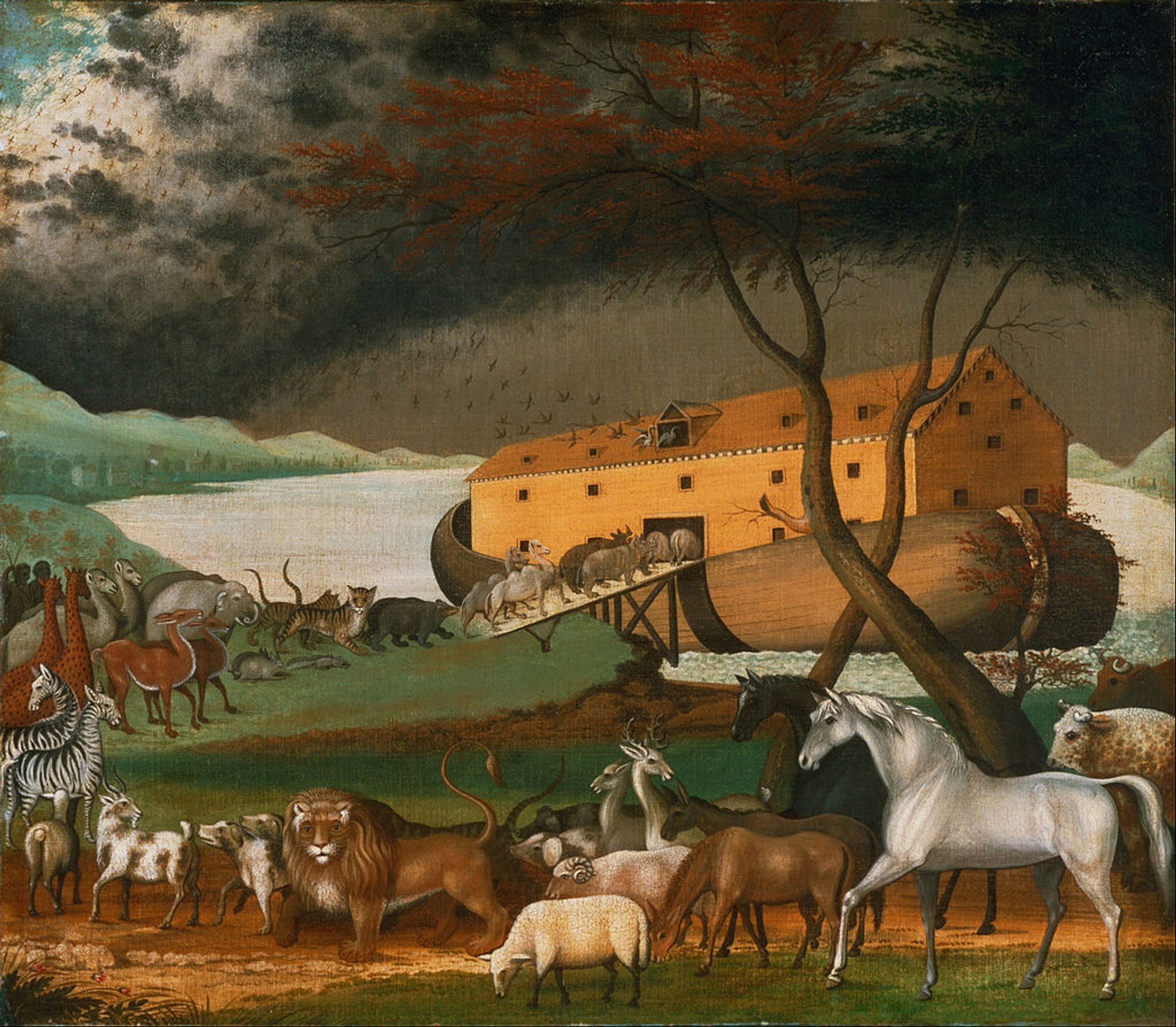
I’m one of the most anti-clerical people you could come across, so I’m not naturally inclined to think about myths as potential sources of scientific knowledge but I can’t argue against the fact that there’s an odd similarity between all the flood cataclysms described in religious scriptures all around the world, at a time when there were very few contacts between distant populations, reducing the risk of a jointly fabricated story. Again, quite intriguing.
As for the reason of this cataclysm, Hancock is advancing the Younger Dryas impact hypothesis which proposes that fragments of a disintegrating comet struck the Earth around 12,800 years ago. It is believed that those fragments would have come from Comet Encke.
The aftermath of this event still brings us what we call the Taurids, two separate annual meteor showers occurring from September 10 to November 20 and from October 20 to December 10. Some argue that those Taurids could still present at some point a threat to our current civilization, due to the presence of very large objects embedded in the group of asteroids.
Hancock considers that some of the ancient artefacts presented in the series could be a time capsule aimed at warning us of an impending danger.
Simulation from a study investigating potential risk of Taurid meteor swarm
In conclusion
The 8-episode Ancient Apocalypse docuseries raises more questions than it brings answers.
Some viewers might have been rightfully annoyed by Graham Hancock’s tone of voice which, in my opinion, works against his legitimate purpose. But I would love to see the scientific community either further investigate some of the sites and claims mentioned in the series or fully debunk those theories with detailed arguments.
There’s only one historical truth, literally set in stone, and we’re still far from knowing everything about our past.
